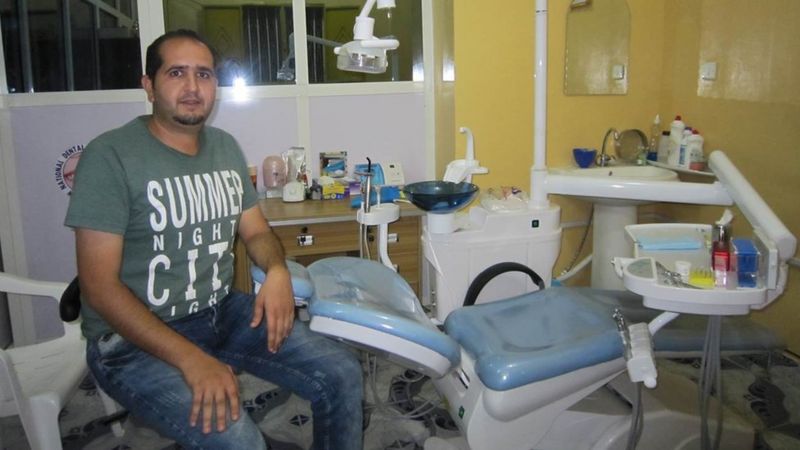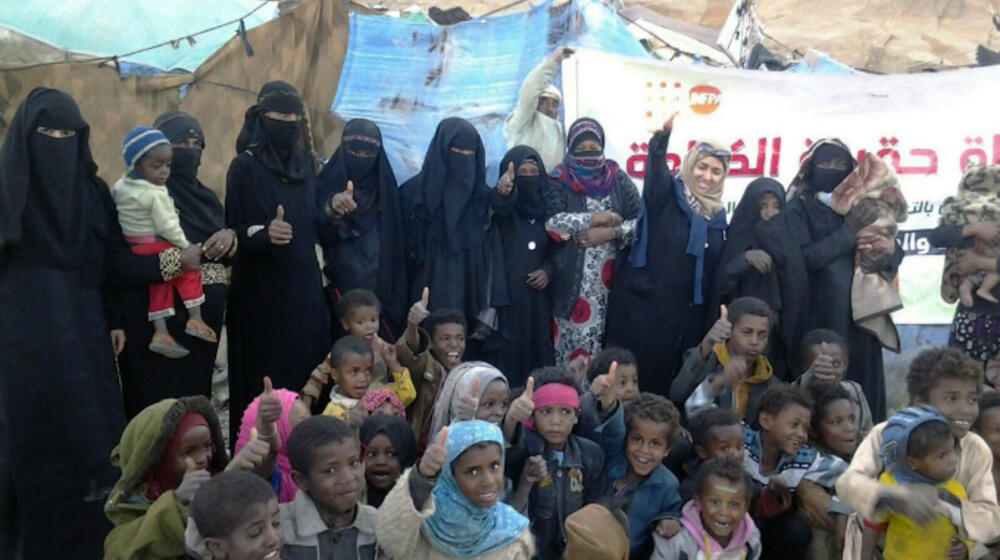You must be clueless
Stranded in Somaliland – Part 1
Yemenis fleeing conflict are taking overcrowded livestock boats across the Gulf of Aden to Somaliland – an unrecognized country. Such is the magnitude of violence in one of the oldest centers of civilization in the Middle East.
WRITTEN BY
Amanda Sperber PUBLISHED ON July 18, 2016
Thirteen-year-old Salim (far left) sits with his siblings in their temporary accommodation in Hargeisa, capital of Somaliland. Salim saw his friend’s face blown off when he picked up a grenade in Yemen in 2015. Salim’s mother Daifa says her son hasn’t been the same since the incident. Daifa herself has a chronic blood pressure problem, but can’t afford treatment in Somaliland. Ashley Hamer
HARGEISA, SOMALILAND – Last May, Sabrina Omar, 21 and mother to four-month-old Abdullah, fled her home in Taiz, a city in the Yemeni Highlands, at dawn.
The previous night a bomb or rocket had hit her home. She doesn’t know what exactly it was, or where it came from. All she knows is that one of her neighbors was killed, and that she and her mother, Said Mohammad Ali, 46, and her younger sister, eight-year old Shyak, left at first light. Shyak hadn’t been in school in months. All the schools in Taiz had closed.
In March 2016, the United Nations Children’s Fund reported that thousands of Yemeni children are “dying from direct and indirect causes of the brutal war.” These children are amongst those who fled to Somaliland and are now living in Hargeisa. (Ashley Hamer)
Sabrina is just one of many people who have been sandwiched between the horror of Houthi snipers and American-supplied Saudi Arabian fighter jets, two of the daily threats in Yemen’s ongoing conflict.
She was six months pregnant when she left home, moving slowly and worried about the health of the baby. She sold her gold jewelry on the trip from Taiz to the port in Aden where they would get the boat. From Aden, they joined about 500 others on the 24-hour journey to Berbera, the central port in Somaliland.
Almost a dozen other family members joined the trio to make the crossing. But Sabrina’s husband wasn’t one of them. He was at work in another part of the city during the attack. She called to tell him they were leaving, but – stuck in the middle of the fighting – he couldn’t reach her in time.
Today Sabrina, baby Abdullah, her mother and her sister are in Hargeisa, the capital of Somaliland, a self-declared country, independent of Somalia. More than 10,000 refugees from Yemen left the nightmare of a war only to fall into hellish bureaucracy.
Reeling from the trauma of their forced migration, they wait in mind-numbing lines for basics such as plates and tampons, while navigating United Nations paperwork and the convoluted political system in a language they don’t speak, spending money they cannot afford.
The United Nations refugee agency (UNHCR) provides some assistance to refugees arriving in Somaliland from Yemen. Here, Yemeni women in Hargeisa wait to receive information and basic “dignity kits,” which include sanitary products, clean underwear and basic toiletries. (Ashley Hamer)
Yemenis have been fleeing the bloody fracas at home for Somaliland since March 2015, when rebel Houthis began advancing on Taiz, Sabrina’s home, and quickly took the city from the government of President Abd Rabbuh Mansour Hadi. Hadi is friendly to Saudi Arabia and the United States; his predecessor, Ali Abdullah Saleh, had a similarly favorable relationship and even supported the U.S. invasion of Iraq in 2003.
That was a political move that reignited the previously dormant Houthi opposition. Saleh remains politically influential and Yemeni security forces have split into those backing Hadi, others backing Saleh and yet others backing the Houthis. Al-Qaida in the Arabian Peninsula (AQAP) has strongholds in the south and southeast of Yemen, and has staged deadly attacks on all parties.
The oldest and youngest members of the Salim family fled Dubab, their native village near the Babal Mandab seaport in Yemen, by boat and live in the port city of Berbera, in Somaliland, with 16 other relatives. (Ashley Hamer)
An Arab coalition led by Saudi Arabia began airstrikes in March 2015, hoping to restore the former friendly ruling government. Ground forces followed last September, leading to continuing outflows of civilians.
Besides Somaliland, other countries in the region have also received refugees from Yemen. Nearly half of the 176,000 people who fled Yemen’s conflict have gone to the Horn of Africa. It is likely that there are well over 10,000 who fled Yemen for Somaliland, but many aren’t registered with the U.N.
For those who managed to flee, the memories have lived painfully on. Sabrina’s family had a mobile phone photo of their destroyed house in Taiz, but eventually she deleted it. Looking at the picture became unbearable for members of the family.
As the family started settling into their new life, worse news arrived. In Hargeisa, the capital of Somaliland, Sabrina received a phone call informing her that her husband and a close friend had been killed in an airstrike.
Yemeni and Somali women come together at a local community center in Hargeisa to equip themselves with skills that will lead to employment. Many are now fending for themselves in a country that is foreign to them. (Ashley Hamer)



















